EDITION 11 | APRIL 2022
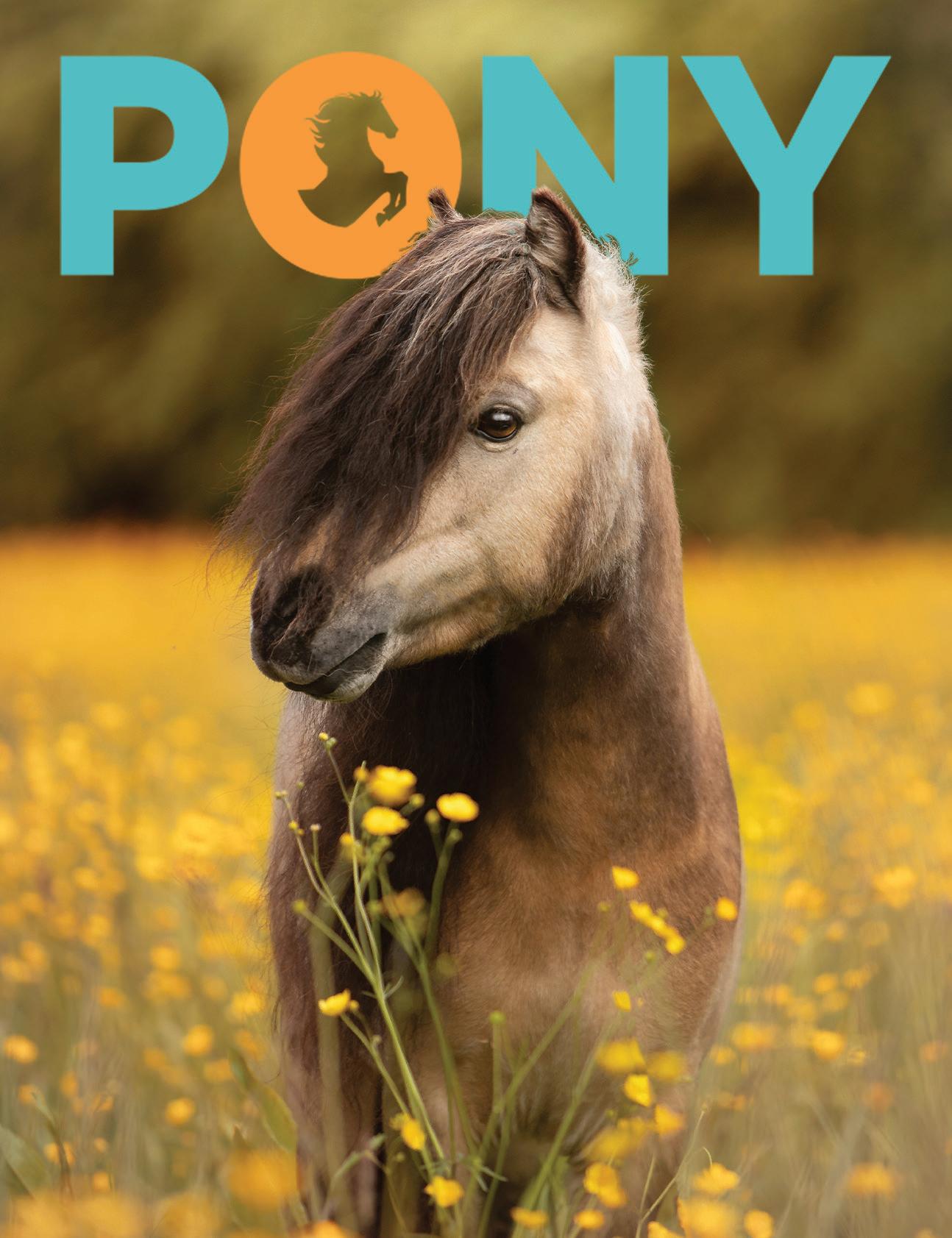
We take pride in our quality, personalised friendly service and uniqueness. No order is too big or too small. Embroidery is offered on all items. Let us design your yard’s numnahs, shirts, daysheets and ears
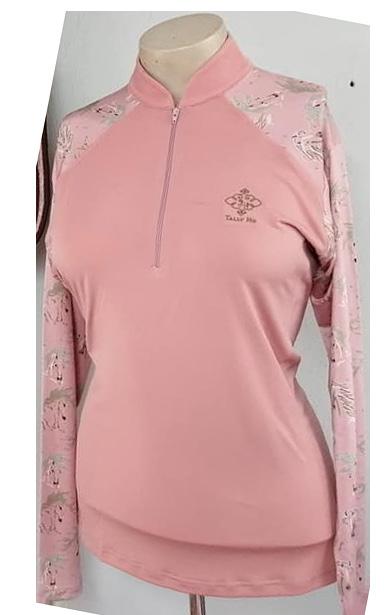

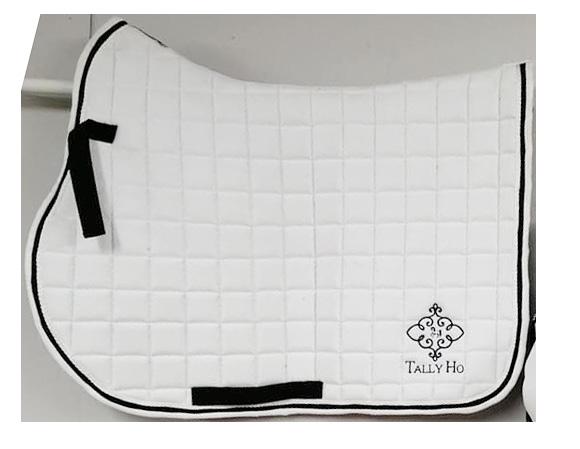

Whether it's for shows or daywear this is the place to buy your goods. We have stunning prints, colours, shapes and designs to choose from.

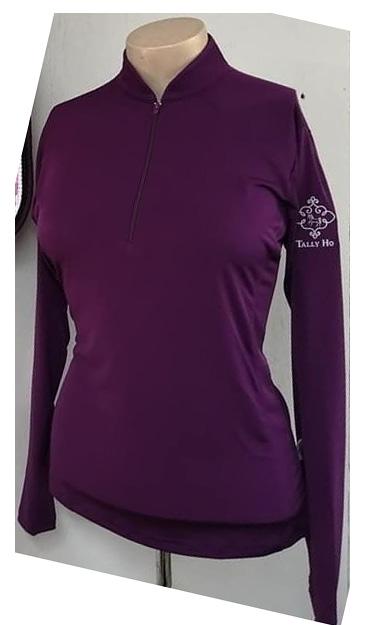

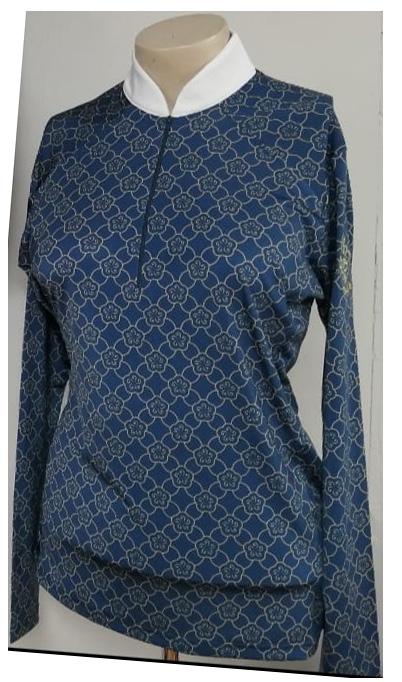
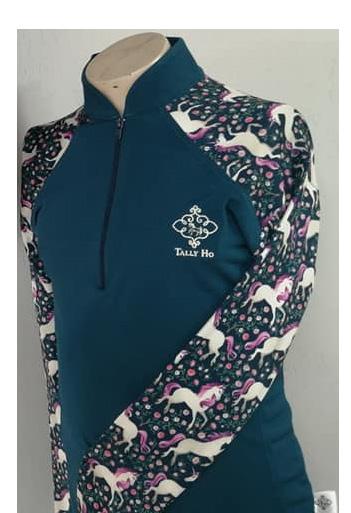
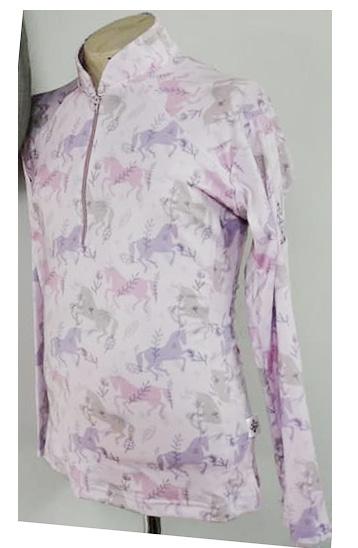

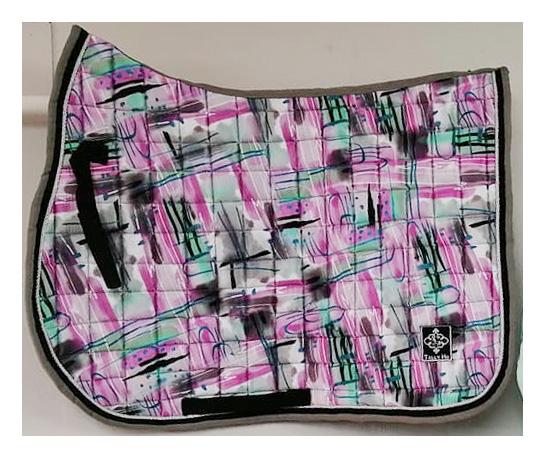


083 357 3799 mcleankeesha@yahoo.ie
Hello!
And welcome to our April edition of HQ Pony Mag.
There’s a lot happening in the horsey world at the moment, and we’re super excited to be part of it. There’s so much interesting new stuff coming your way in the next few months and we just know you’re going to love it!
In the meantime, we have some great articles and puzzles here to keep you busy when you’re not with your ponies. Dive in and get reading!
COMPETITION
We are again running our ‘Find the icon’ competition with some Easter themed icons for you to hunt for.
To take part, count the number of icons (shown below) that you can find in the magazine, and then send us an email with your answer and name to lizzie@hqmagazine.co.za. We’ll select our winner, email them and announce their win on Instagram!
The icons you need to search for are:
And we need to know the number of EACH icon, not the total number of all icons.
In the meantime, happy horsing! Give your ponies a carrot from us!
With much love, Lizzie and the HQ Pony Team xxx
We’d love to hear from you and receive your photos, drawings or pony-related thoughts. To get in touch send an email to lizzie@hqmagazine.co.za and we’ll get back to you!
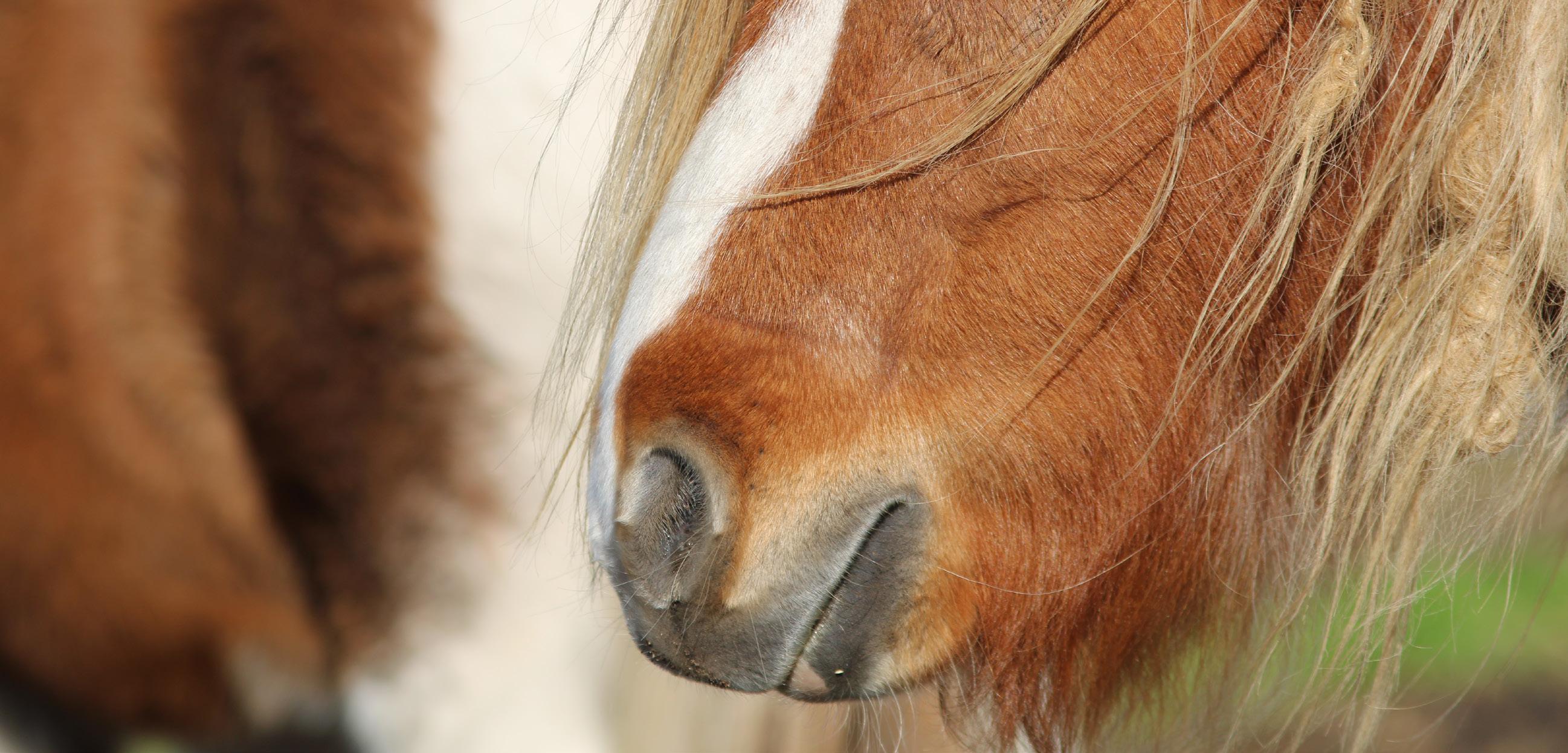
Pony of the month: Blue Ivy 1 Stretching out 5 Brushing boots 7 Posing ponies 9 Horse and Pony Breeds: 11. Mustangs 11 Did you know? 13 Old Age 15 Did you know 17 Monitoring manure 19 Fast fact 21 Products we love 23 Q&A 24 Puzzle fun 27 Next issue 31
Dream big with
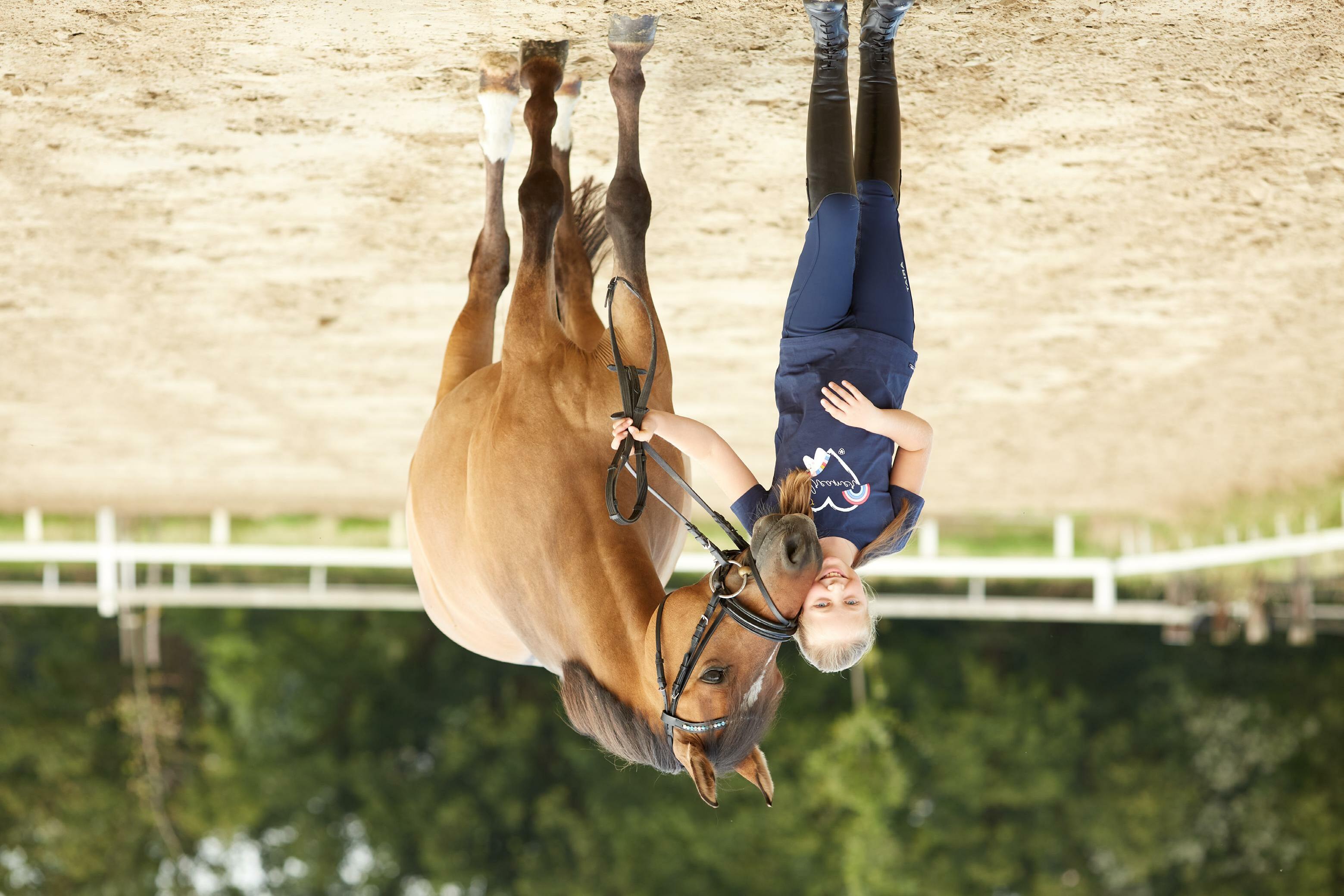
 Text | Georgia Harley
Text | Georgia Harley
Pony of the Month BLUE IVY
Blue Ivy is a six-year-old piebald pony mare owned by rider Luca Watson. Luca is just twelve years old but already a very talented young rider, so he was able to take on this young, inexperienced pony. He knows it’s going to take a lot of time and effort to show just what this special mare can do, but he’s prepared to put in the hard work!

1
Appearance
Blue Ivy is a beautiful piebald mare with light blue eyes. You can’t fail to notice her!
Breeding
This mare’s breeding is an unusual mix that just works! She is a Quarter horse crossed with an Arab cross Boerperd. Her sire is Apache, and her dam is a mare named Onyx.
Riding
Luca’s family purchased Ivy in 2021 from Anthony Kay’s Ebb and Flow stables in Port Elizabeth. Luca instantly knew that Ivy was a future star for him. Although Ivy is very green, Luca is willing to take on the task of producing her to Open Level himself. Luca believes that the key to achieving this goal of jumping Open with Blue Ivy is exposure; therefore, Luca takes every opportunity to show Ivy different venues, arenas, and types of fences.
Luca has already made a lot of progress with Blue Ivy, with the pair having so far competed at SANESA shows, graded shows and Horse of the Year. So, not only do this pair compete in showjumping classes, but they also compete in Equitation and Working Hunter classes and have been very successful to date. Last year, before Blue Ivy was purchased, she had only ever done one 80cm training show, so this progress is pretty impressive! Plus, all of these different disciplines and venues will only help Ivy become confident, brave and relaxed when going to new places and taking on new challenges.

2
Everyday is a new learning day; we are still building our relationship
Personality
Ivy is a very sensitive, fiery mare that is very particular in her way of going. Luca explains that working with her has already improved his riding. The pair seem to be a great match with the combination already competing in the 1m classes. Luca describes Ivy as as a pony that locks onto a jump, which is a lovely quality for a youngster! Their confidence will only continue to grow!
Future
With these only being the beginning days, it is very exciting to see where this young, talented combination will be in a few years. Luca will continue to learn through the production of his magnificent pony, and there will be plenty of success to come. We cannot wait to continue to watch the progress this young team makes.

3
I want to turn her into a school master that any Open Rider would be happy to own.
DID YOU KNOW
There is a registry for blue-eyed horses called the Blue-Eyed Horse Association. Any horse can be registered if they have at least one blue eye identifiable on a photograph.

4
Stretching is something we often forget to do with our ponies, but it really is a great way to end off our riding sessions.
A quality stretch
A quality stretch sees your pony lift his back, raise his withers and put his poll as the lowest point of his topline. If he is stretching well, you will probably feel him become much looser under you, and his strides may become longer.
Of course, stretching can also be great at the start of a session, but most ponies will want to stretch after they have worked their muscles, not necessarily before.

5
Asking your pony to stretch

A stretch must never be forced, as true stretching requires relaxation, so stretching isn’t something you can ‘make’ your pony do, nor should you want to! Instead, keep a contact on your reins but gradually lengthen the reins. If your pony is ready to stretch, he will stretch out and fill the entire length of the rein you have given him. You can then gradually give him a bit more rein and so on. Don’t just throw your reins away and expect your pony to stretch – keep your contact, albeit a light contact!
Working on the stretch
If your pony struggles to stretch, you can work on his ‘stretchiness’ using carrot stretches on the ground. Carrot stretches really help improve suppleness and reduce the risk of soreness for your pony. They can be done before and after a session, but remember not to ask too much before a session when your pony’s muscles are still cold!
Remember
Stretching is not easy for many ponies, and whilst they may like the feel of it, they can lose their balance and start to rush. Don’t panic if this happens, but just keep your stretching sessions short and over time you’ll find your pony gets better and better at letting loose! The stretches you get in the beginning are just a starting point from which you can only improve!
6
The main type of boot, which can be used for all different purposes, is a brushing boot. They offer all-round protection from below the knee to the fetlock but aren’t too heavy or bulky. This makes them ideal for flatwork, hacking and lower-level jumping if your pony needs protection. They have a pad on the inside of the leg and are usually fastened with Velcro on the outside.

7
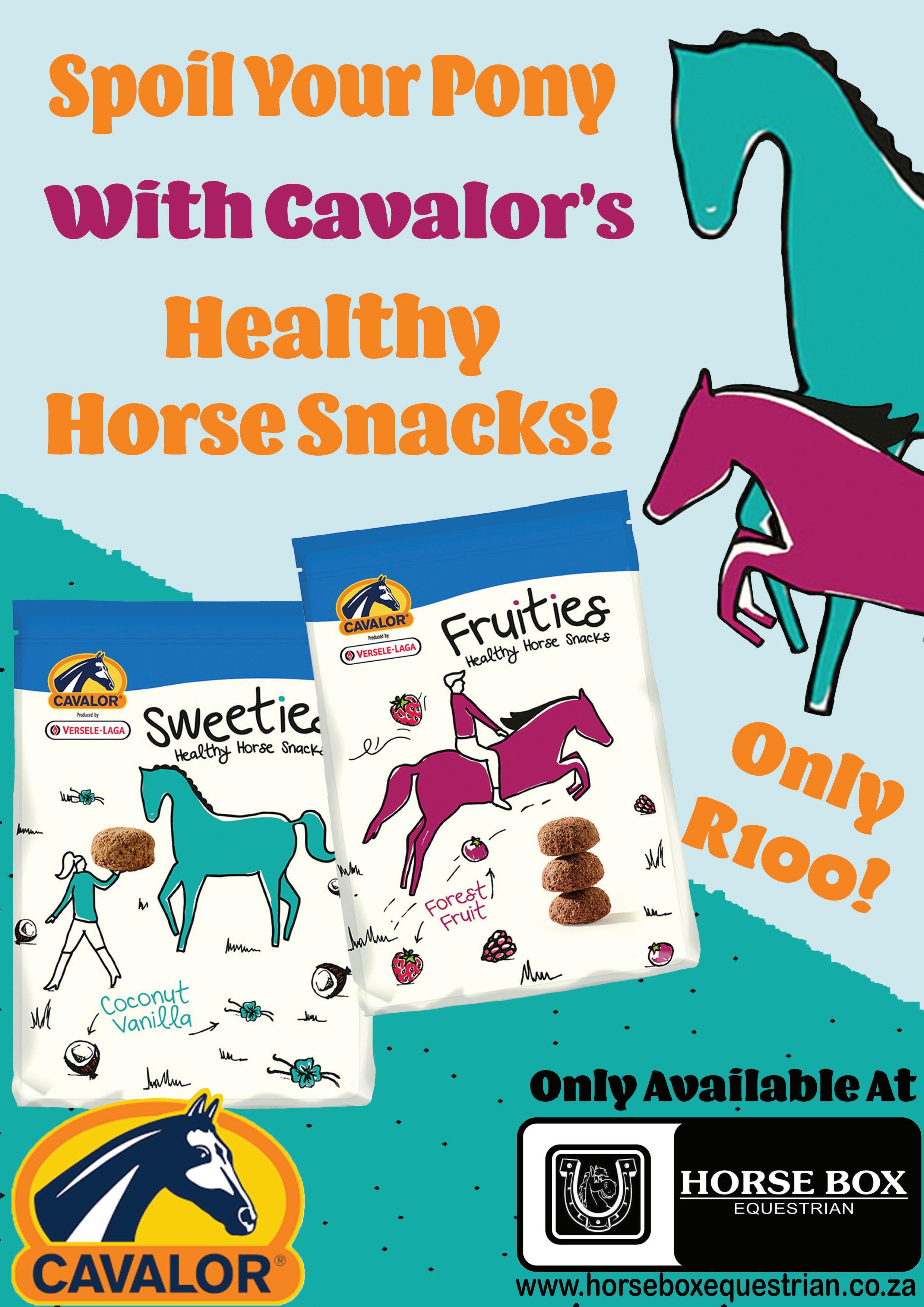
How to get the perfect pic of your pony

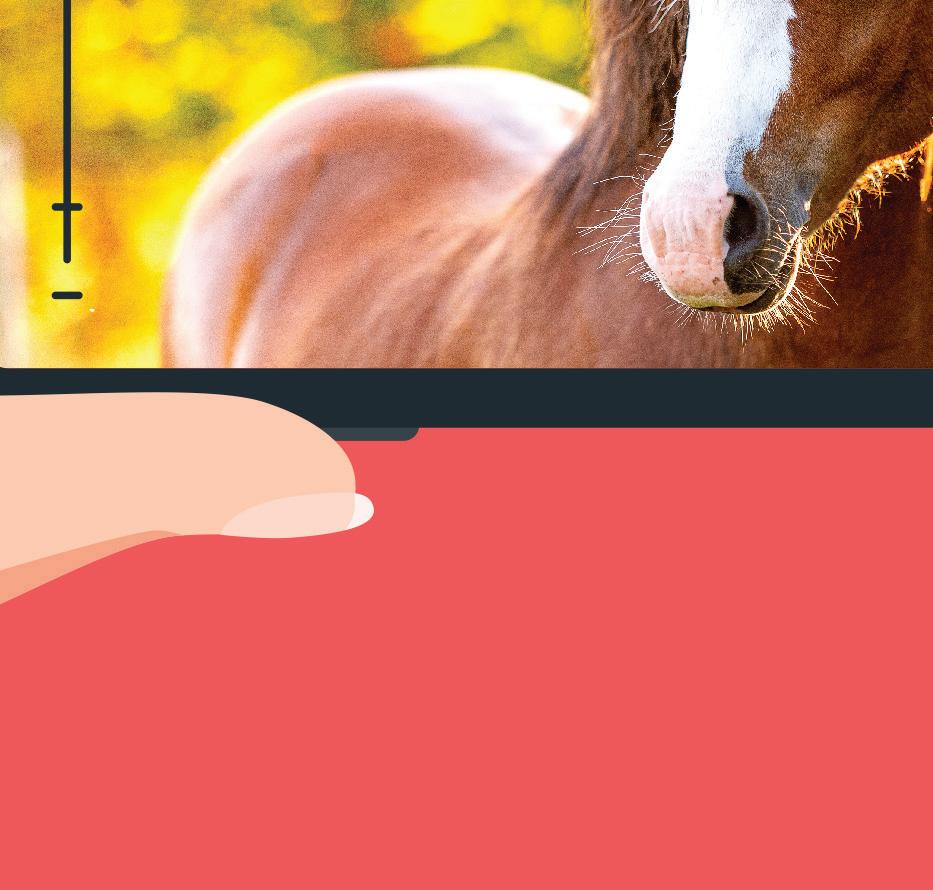


We all love looking at photos of our favourite pony, but how do you make sure you capture him looking at his best? Here are a few tips for getting the best photograph possible of your pony pal:
The first thing you need to do is recruit a friend or two to help you with the process. There’s a lot to organise in getting your pony ready for his photoshoot, and the more people you have there, the easier it will be.


Then you need to make sure your pony is looking his very best. You should give him a thorough groom, wash off any stubborn stains and apply some shine spray to his coat, mane and tail. Once you’ve got him looking slick, you’re ready to go!

Next up is to make the scene of your photo look great. It’s no use having a beautiful pony if you stand him against an ugly backdrop. Try to choose the prettiest part of your yard and tidy up any yard equipment lying around.

1 2 3 9
Once you’ve decided on your location and given it a quick spring clean, you need to look at which direction the light is shining. Ideally, you want the light to come from behind the camera, not behind your pony for your photographs.
The next challenge is to get your pony standing in the position you require for the image. Think about which angle will capture your pony’s best side too. Do you want him to be head on to the camera, at an angle or maybe even side-on? Check how his weight is distributed to ensure he isn’t leaning to one side or the other or tipping forwards over his front legs. Ideally, you want him to stand square.
You must always check that your camera settings are correct, and remember to make sure the lens is clean!
Once you are ready with your camera, you can get one friend to hold your pony and the other to stand at a distance jiggling a bag of treats to help encourage him to put his ears forward.
Do a final check to see that your pony is in focus, and then snap away! It’s always a good idea to take more pictures than less so that you have a good chance of getting one you are happy with.
Editing your pictures afterwards is a critical step in the process. Of course, you need a shot that is set up well in the first place, but editing really does add those finishing touches and create magazine-worthy images!
4
5 8 6 9 10
7
11. Mustangs
Today mustangs live in feral herds in the United States. They are descended from Spanish horses brought to the country by European settlers in the 16th Century. Many of these early horses escaped from their owners, and others were stolen or traded in deals.

These free horses formed herds and gradually occupied space in the west of the USA. Over time the herds grew in size, but as the country was increasingly settled and ranchers sought out land for cattle, the increased population became a problem, and people started to hunt and poison the horses to get them off their land. In the early 1900s, there were as many as two million mustangs in the USA. Currently, it’s estimated that 50,000 mustangs are still in existence. Most are found on private land, sanctuaries and reservations.
There are now laws in place helping to protect mustangs, and adoption processes have been started to help find safe homes for these special horses.
11
About
Mustangs are smaller horses, typically standing between 14 and 15 hands high. They are a versatile breed with successful careers in pleasure riding, ranch work, dressage and more. They are known for being hardy and surefooted and are considered easy to keep.
A mustang that has just been adopted from the feral herds will be reactive and spooky to begin with, but given time these horses become calm and well-mannered. If lovingly and properly trained, these horses make amazing riding horses.

Mustangs come in a wide variety of coat colours. Many are bay and chestnut, but black, grey, pinto, roan and palomino coat colours also occur. They have thick, brush-like manes and forelocks, and their eyes are set further apart than in some other breeds, giving them a distinctive look when seen head-on.
Did you know?
Due to being descended from Spanish Barb Horses, a true Mustang should always have 17 ribs!
12
Did you know?
There were no horses in Australia until 1788 when they arrived on boats with the first Western settlers. As only the strongest and fittest horses survived the sea journey from Europe, Australian horses are still considered some of the toughest horses and ponies in the world.

13

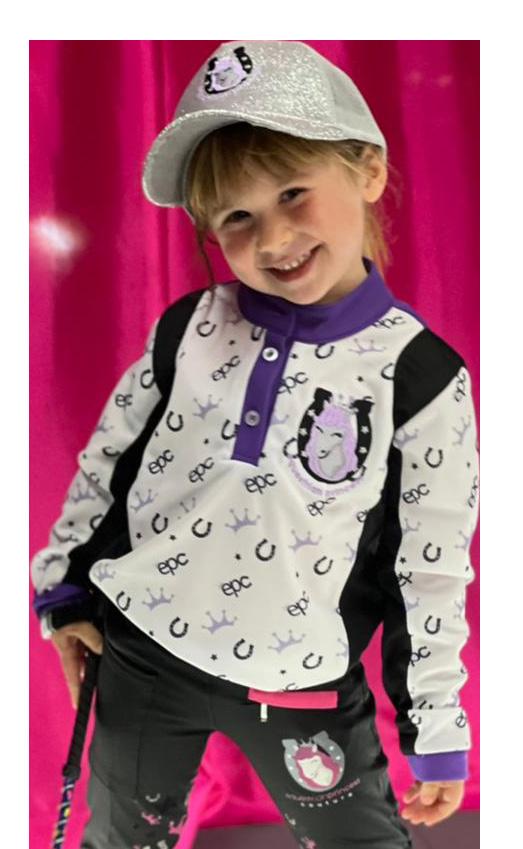
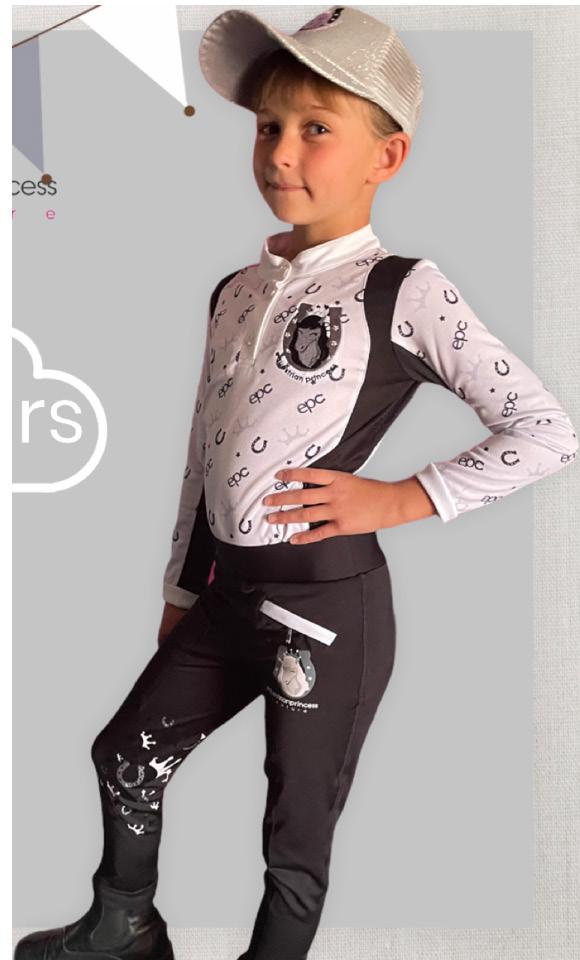

011 468 3717 Crocus Road,Kyalami,Midrand online@equestriandivacouture.co.za
Old age
Ponies don’t all age at the same rate. Some of this is due to genetics, and some to the care they have received throughout their lifetime. Ponies are, generally speaking, labelled as ‘senior’ when they reach the age of 15, but this is a massive generalisation, as many ponies remain youthful well into their mid-20s.
However, whatever the age, it is always worth checking your pony for signs of ageing, as the signs you see outside are usually mirroring changes that are happening on the inside, and these changes need to be thought of when planning your pony’s work schedule. Signs of ageing do not mean that your pony needs to retire, but just that he needs specific types of care for his stage in life. With proper care, attention, and consideration of your pony’s requirements and needs, many ponies can continue competing, even at an ‘old’ age.

15
Signs of ageing
Signs your pony is ageing include the growing of grey hair around the eyes and muzzle. This is much more obvious in ponies with a dark coat colour. Older ponies also lose some skin tone, and the skin almost feels ‘loose’. The hair may also become rougher, and the skin may feel thickened and dry under his coat. Skin wounds often also take longer to heal in the senior pony.
Some senior ponies develop a ‘choppy’ gait, resulting from weaker muscles and arthritic joints. In these ponies, maintaining a reasonable exercise regime is more important than ever. Another key sign of ageing is a dipped back. This is due to slack musculature in the area and is called lordosis or ‘sway back’. Some ponies suffer from it early on in life, so a dipped back is not a sign of old age on its own. However, newly developed dipped backs are generally caused by old age. In many ponies, the depression above the eye also becomes deeper. This is again caused by slack muscles. In older ponies, you can also expect energy levels to be lower, and warm-ups will definitely need to be longer, workouts more gentle, and aftercare will need to include joint care and maintenance.

A change in appetite can also develop with age, and older ponies can become very picky and attached to their routine. An older pony may need more food for energy, but we need to make sure they don’t become overweight. Teeth are an issue in ageing ponies – an older pony tends to have longer front teeth and may sometimes have worn or missing back teeth. A pony’s diet may need changing to make up for his poor teeth. By the time a pony reaches the age of 15, the groove on the outside of the teeth (Galvayne’s Groove) will almost wholly have grown out, and the teeth will look more sloped and slanted.
Final thoughts
Even if your pony doesn’t look old, there can still be changes happening inside. Pay close attention to your pony and make sure you spot the signs when they occur so that they can be managed. Managing your pony’s ageing process can give the two of you much more quality time together, and at least, in our opinion, there isn’t anything more important than that.
16
Did you know?
Donkeys can live for more than 50 years, and they have an incredible memory – they can recognise places and other donkeys from 25 years ago!
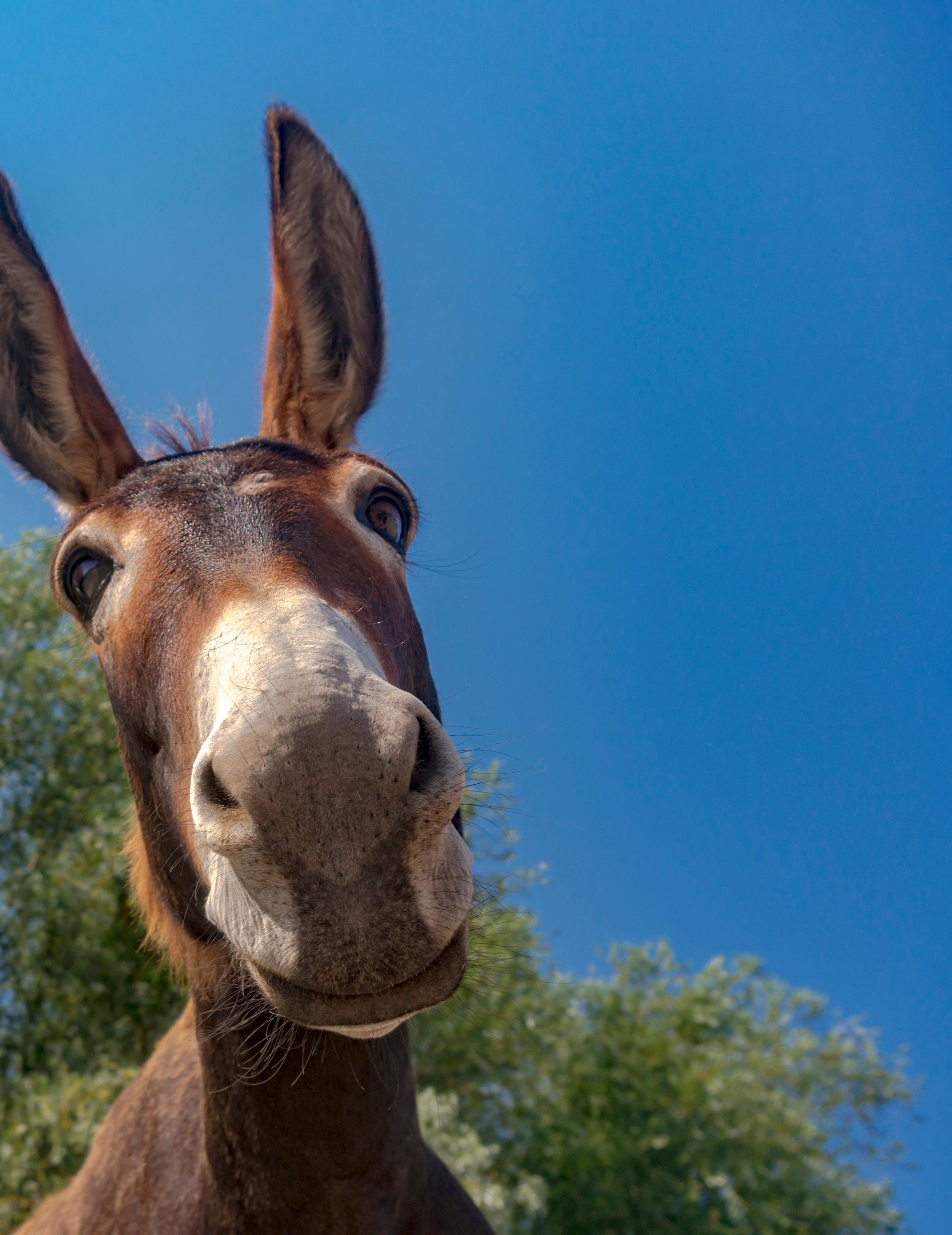
17


Whilst it’s not the most pleasant topic, understanding more about your pony’s manure can help you know how he is doing health-wise.
What to look for
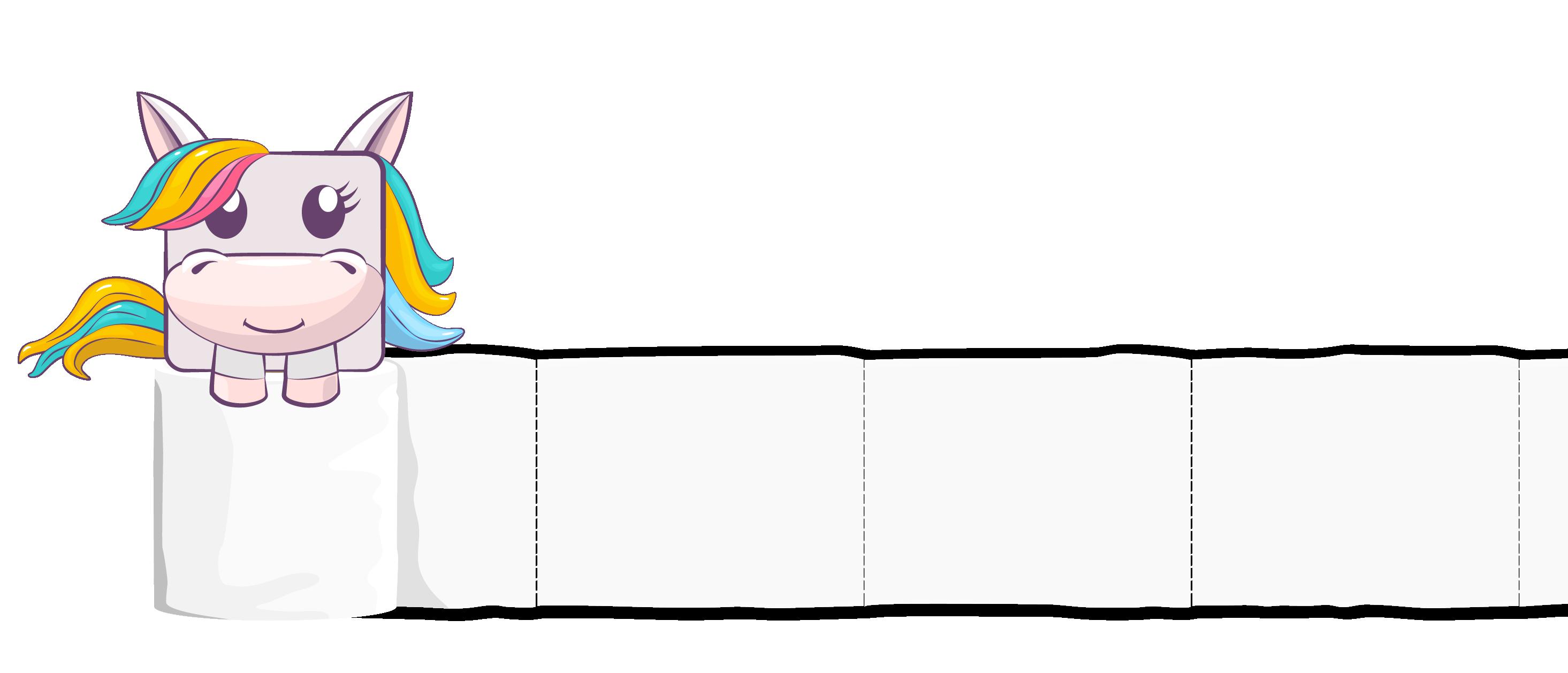
Manure should be made up of firm, well-formed balls. Very loose droppings or very dry droppings are always a cause for worry, and your vet will need to come and see your pony to give them a check-up. Ponies generally pass manure every couple of hours, so if your pony goes for a couple of hours without passing manure, you should also think about giving your vet a call.

19
This manure is not well formed.
You should regularly check manure for any signs of undigested food (like whole oats or long bits of grass), as this can be a sign that your horse is struggling with his digestive system in some way. It could be that he needs to see the dentist; that he is getting too much food, so it is passing through too quickly; that his gut does not like the food he is getting; or that he has a problem with his digestive system. Again, the best thing to do would be to discuss the issue with your vet.

The other thing to look out for in manure is worms. Most worms can only be seen under a microscope, but some can be visible with our naked eye if we look for them. If you see worms, you can be confident that your pony has a lot of worms in his system, and you should speak to your vet about the best dewormer to use.
Summary
The ‘bottom’ line with manure is that if you notice any changes from the norm, you need to get it checked!
20
Fast fact
Horses can’t vomit due to the strong band of muscles surrounding their oesophagus. This band of muscle is so strong that a horse’s stomach would burst before the horse could vomit!
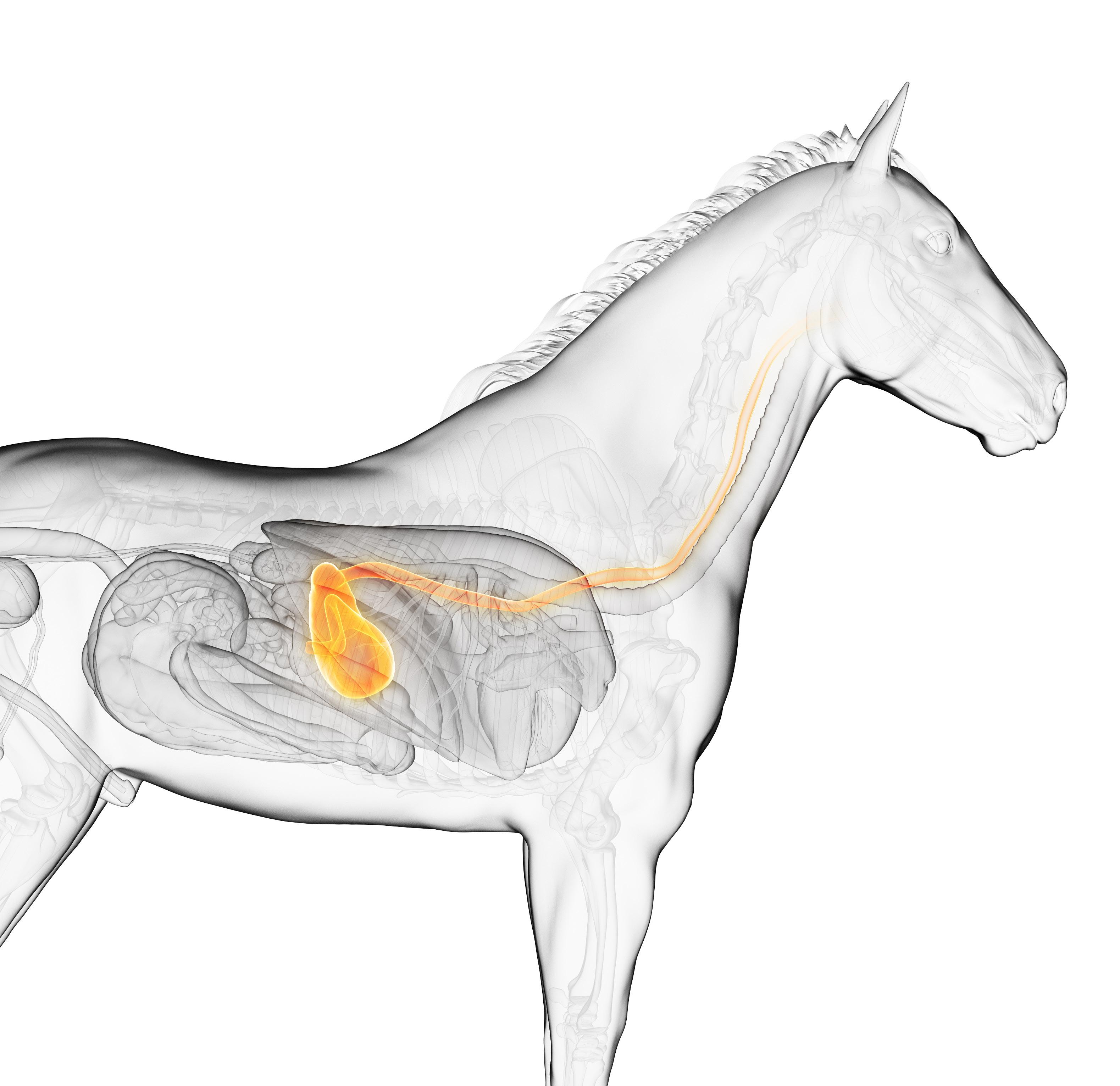
21
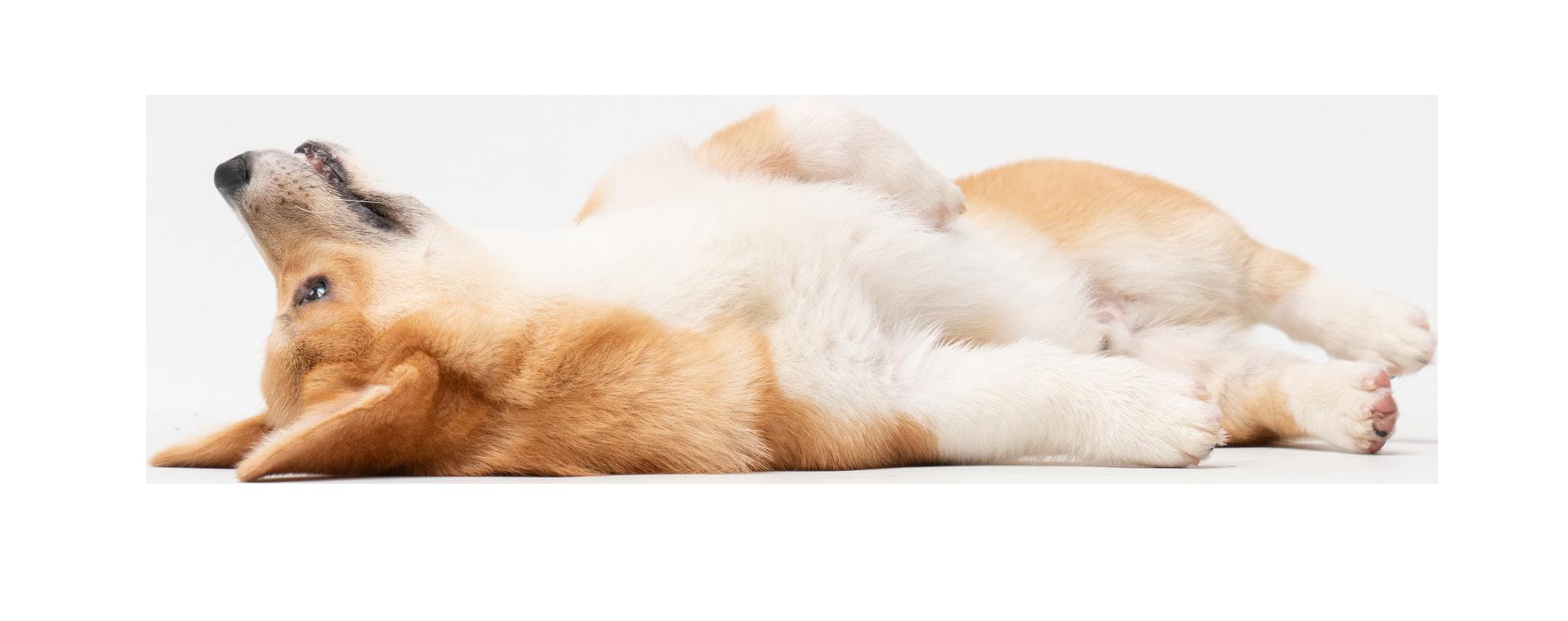
Contact us: info@dqmagazine.co.za
Samshield Helmet
Customisations
Create a unique Samshield… just like you!
Build your dream helmet with a fully customised Samshield Shadowmatt or Miss Shield Helmet to express your unique self.
Choose from:
• 4 shell colours
• 30 trim colours
• 2 embedded Swarovski stone trims
• 17 unique fabric finishes for the top
• 4 Samshield blason and air vent finishes

You can even personalise your helmet with your name, team logo or country flag!
Build your own Samshield helmet and request a quote from Western Shoppe. Learn more at www.westernshoppe.com

PRODUCTS WE LOVE
23
Q: How often should I clean my grooming kit?
A:A clean grooming kit helps keep your pony’s coat shiny and healthy, so it’s good to clean your brushes regularly – every three to four weeks – because there is no point grooming a pony with dirty brushes! Of course, you should also clean your grooming kit if your pony gets particularly dirty and the brushes become muddy or dusty or if your horse has a skin condition and your vet advises you to wash brushes more frequently.

24
Q: Is a horse now classified as a domestic animal?
A: Yes, the modern horse is classified as a domestic animal, as he is defined as ‘a species bred, born and raised and used’ by humans. Some herds of native horse breeds still exist in the wild, but most so-called wild horses are actually domestic horses that have escaped and become settled in their environment. The only truly wild horses left in existence today are Przewalski’s horses.

25
Q: My pony hates trucking boots and stamps and kicks until he gets them off. What can I do about this? I’m worried about him travelling without boots.

A:Often, trucking boots feel pretty weird to ponies when they wear them for the first time. Then, because ponies don’t wear the boots often, they don’t really get used to them. This means that getting your pony happy in the boots, is usually just a case of spending the time to get him used to them so that he is comfortable in them.
Begin by going right back to basics - is your pony comfortable with other boots like tendon boots? If not, you will need to start with these and gradually work up to trucking boots.
When first introducing boots, make sure you work with an adult and wear a hard hat and sturdy shoes. You should only practice with getting your pony used to boots in a safe environment. Work with just one boot at a time, to begin with, and start with the front legs. When introducing the boot, spend lots of time running your hands down your pony’s legs, putting the boot on, and then removing it afterwards. You don’t want to leave the boots for long to begin with. Over time, as your pony gets more used to wearing the boots, you can leave them in place for a bit longer.
You should be able to put the boot on each leg and have your pony stand quietly before you move on to putting on two boots at once, then three and finally four. When he can stand quietly in all four boots, you can ask him to take a couple of steps and then stand again. If he does this, reward him and remove the boots. You can then try a few more steps the next day and finally load him into the horsebox in the boots. As soon as he is comfortable with this, you can ask someone to take him for a short drive in the horse box with the boots on, and and gradually work up to travelling to shows or clinics in them.
This is a long process but avoids the dangers of your pony fighting boots while travelling. Make sure you give him plenty of praise and rewards as you work through this, and you will soon find that your pony is a trucking boot pro!
26
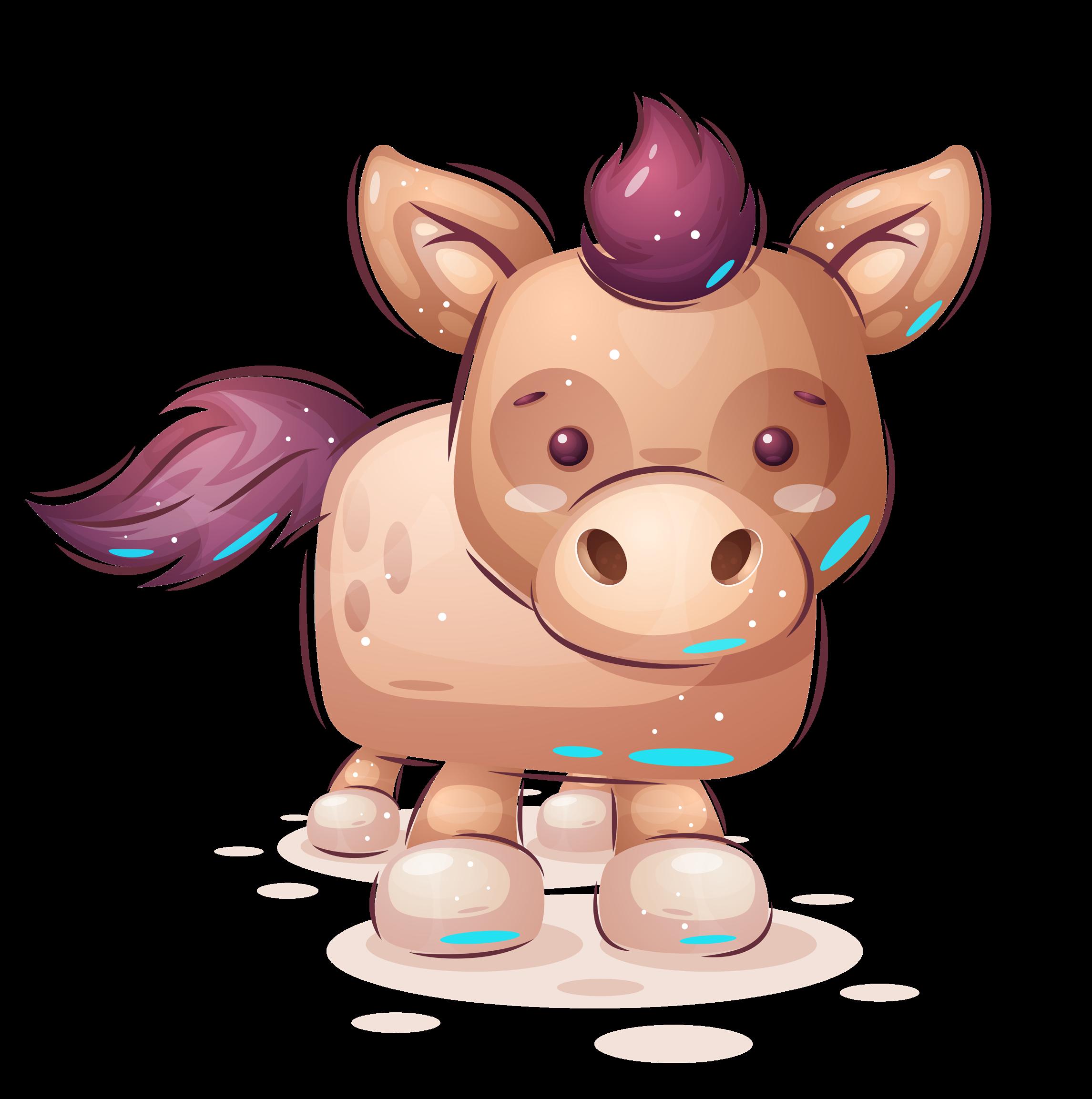
27
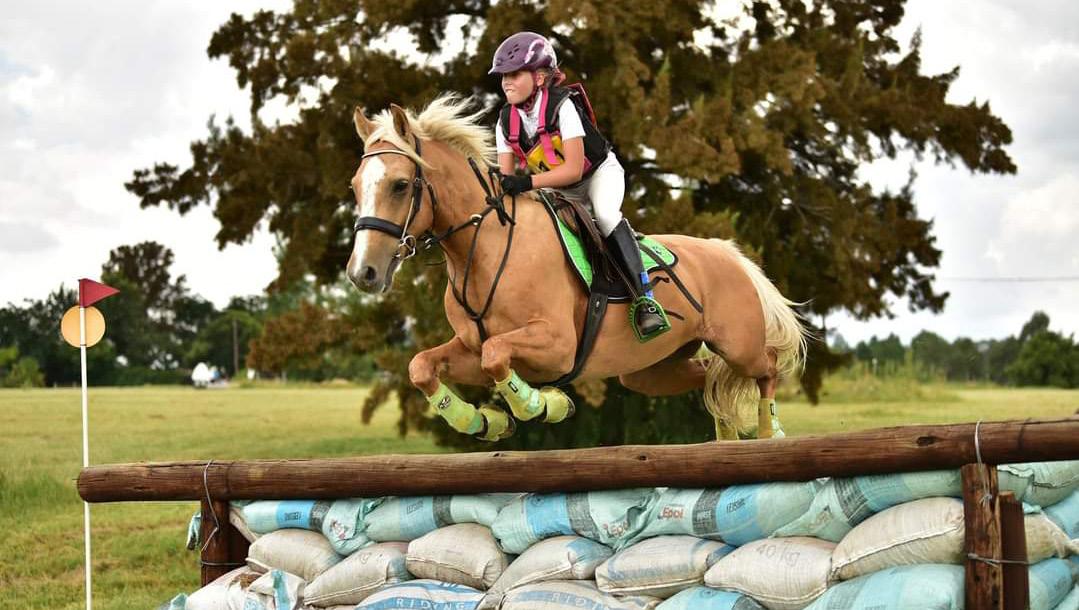
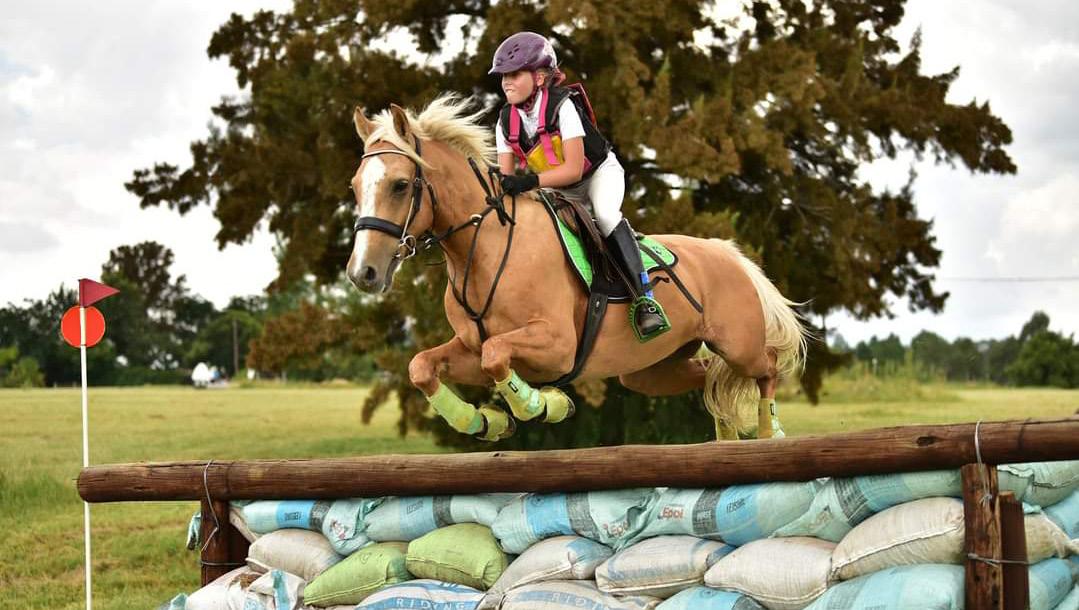
28
CAN YOU SPOT THE 10 DIFFERENCES? CAN YOU SPOT THE 10 DIFFERENCES?
CAN YOU SOLVE THE WORD SEARCH? CAN YOU SOLVE THE WORD SEARCH?
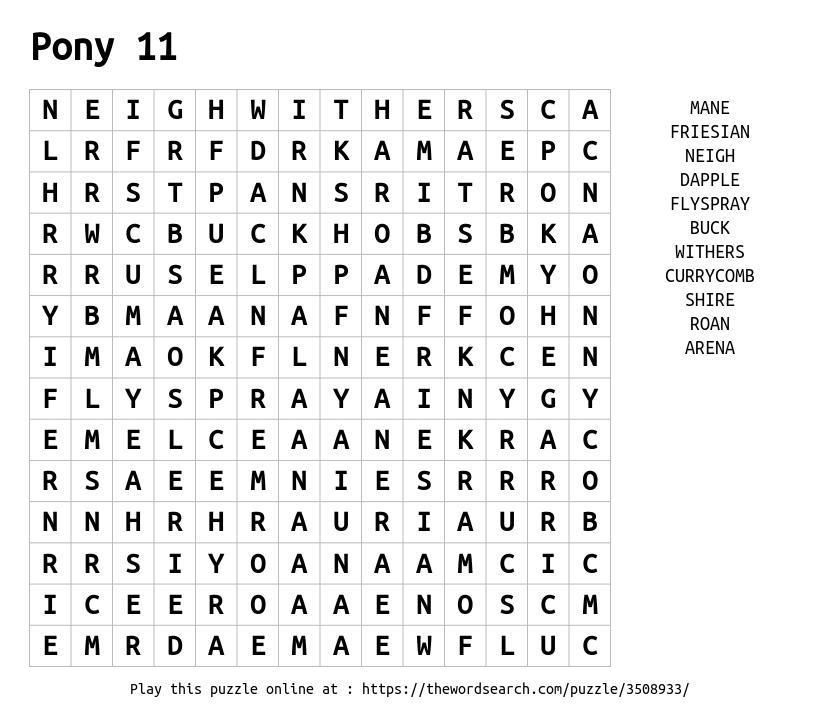
29
30 x 30 'diamond' shaped maze
CAN YOU SOLVE THE MAZE? CAN YOU SOLVE THE MAZE?
FINISH 30
START
NEXT ISSUE
OF HQ PONY MAGAZINE AVAILABLE ON 1 MAY. SEE YOU THEN!
31


















 Text | Georgia Harley
Text | Georgia Harley

















































